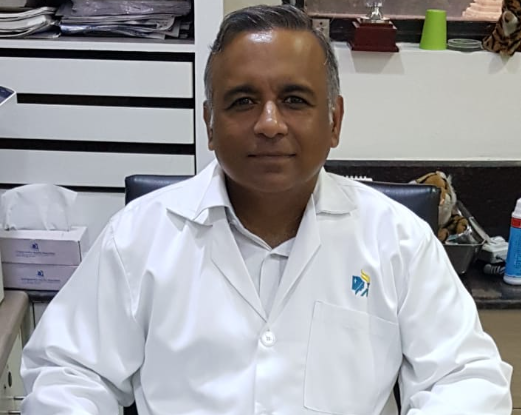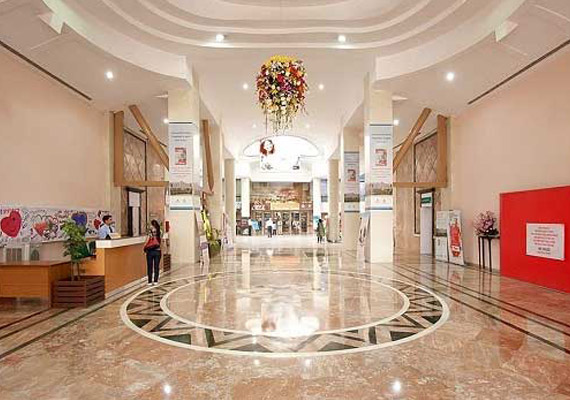Limb Deformities Treatment in India
treatment
starting from
Introduction
Limb deformities encompass a wide range of physical abnormalities that affect the shape, structure, or function of one or more limbs. These conditions can be congenital or acquired, with varying degrees of severity. Limb deformities may arise from genetic factors, environmental influences, injuries, infections, or underlying medical conditions. They can significantly impact an individual's mobility, independence, and overall quality of life. In this comprehensive blog, we will delve deeper into the various types of limb deformities, their potential causes, methods of diagnosis, available treatment options, and answer frequently asked questions related to these conditions.
Types of Limb Deformities
1. Congenital Limb Deformities: These types of deformities are present at birth and occur during fetal development. Congenital limb deformities can manifest in different ways, including limb length discrepancies, clubfoot (talipes equinovarus), congenital hip dislocation, and limb reduction defects, among others.
2. Acquired Limb Deformities: Acquired deformities develop after birth due to various factors such as traumatic injuries, infections, or certain medical conditions. Common examples include limb malformation caused by osteomyelitis, bone infections, or post-traumatic limb shortening resulting from fractures.
3. Developmental Limb Deformities: These deformities arise as a child grows and are often due to abnormal bone or joint development. Conditions like Blount's disease, a growth disorder affecting the shinbone, and developmental dysplasia of the hip (DDH), where the hip joint is dislocated or underdeveloped, fall under this category.
4. Functional Limb Deformities: Functional deformities occur due to abnormalities in muscle or nerve function. They may cause limb contractures, abnormal postures, or limb length discrepancies due to muscle imbalances.
5. Syndromic Limb Deformities: Certain limb deformities are associated with specific genetic syndromes. For instance, arthrogryposis multiplex congenita (AMC) is a condition characterized by multiple joint contractures that affect the limbs.
Causes of Limb Deformities
Limb deformities can result from a variety of factors, and understanding the underlying cause is crucial for determining the appropriate treatment approach:
1. Genetics: Some limb deformities are caused by genetic mutations or inherited conditions that disrupt normal fetal development, leading to limb abnormalities.
2. Environmental Factors: External influences during pregnancy can contribute to limb deformities. These factors may include exposure to certain toxins, medications, or infections that interfere with proper limb development.
3. Injuries: Traumatic injuries to the limbs, such as fractures or nerve damage, can result in acquired limb deformities, especially if not properly treated.
4. Infections: Severe infections in the bones or joints, such as osteomyelitis or septic arthritis, may impair normal limb growth and lead to deformities.
5. Neurological Disorders: Conditions affecting the nerves or muscles, such as cerebral palsy or spinal cord injuries, can cause functional limb deformities due to abnormal muscle tone and coordination.
6. Vascular Disorders: Abnormalities in blood vessels can also interfere with proper limb development and lead to deformities.
7. Tumors: Although rare, tumors affecting bone or soft tissues can cause limb deformities, especially if they grow near or within the limbs.
Diagnosis and Evaluation
Accurate diagnosis is crucial to determine the type and extent of limb deformities and develop an appropriate treatment plan. The evaluation process typically includes the following:
1. Medical History: Gathering a detailed medical history, including any family history of similar conditions, helps provide valuable insights into the potential causes and underlying factors.
2. Physical Examination: A thorough physical examination of the affected limb(s) is performed to assess their shape, length, alignment, and function.
3. Imaging Studies: X-rays, CT scans, or MRI imaging may be employed to obtain detailed images of the bones, joints, and soft tissues, helping to identify the exact nature and extent of the deformity.
4. Genetic Testing: In cases where a genetic syndrome is suspected, genetic testing can help identify specific mutations that contribute to the limb deformity.
5. Nerve and Muscle Studies: Electromyography (EMG) and nerve conduction studies can evaluate nerve and muscle function, especially in cases of functional limb deformities.
Treatment Options
The treatment approach for limb deformities varies based on the type, severity, and individual needs of the patient. The primary objectives of treatment are to improve limb function, correct alignment, and enhance the overall quality of life. Treatment options include:
1. Physical Therapy: Physical therapy plays a crucial role in managing limb deformities. It focuses on strengthening muscles, improving joint mobility, and enhancing overall functional abilities.
2. Orthotic Devices: Custom-made orthotic devices, such as braces or splints, may be utilized to support and align the affected limb and facilitate better movement.
3. Surgical Interventions: In more severe cases or when non-surgical methods prove inadequate, surgery may be necessary. Surgical procedures can include limb lengthening, realignment osteotomies, joint fusions, or surgical correction of bone deformities.
4. Prosthetics: In cases where a limb cannot be preserved or effectively treated, prosthetic limbs can significantly improve mobility and independence.
5. Medications: Medications may be prescribed to manage pain, reduce inflammation, or treat underlying medical conditions contributing to limb deformities.
6. Genetic Counseling: In cases of congenital limb deformities with a genetic basis, genetic counseling can be beneficial for families, providing information about the condition's inheritance pattern and potential risks in future pregnancies.
Conclusion
Limb deformities can present complex challenges to individuals and their families. The understanding of different types of limb deformities, their potential causes, and the available treatment options is crucial for providing effective care and improving the quality of life for affected individuals
Early diagnosis, appropriate medical interventions, physical therapy, and supportive care are essential components of a comprehensive treatment approach. By addressing limb deformities with a multidisciplinary and patient-centered approach, healthcare professionals can help individuals achieve improved functionality, mobility, and overall well-being. If you suspect or encounter limb deformities, seeking timely medical attention and guidance is essential to determine the most suitable treatment plan and support the affected individuals in leading fulfilling lives.
How It Works
Need help in organizing medical travel to India?











